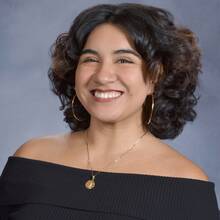A Reflection for the Feast of Saints Simon and Jude, Apostles
You can find today’s readings here.
“When day came, he called his disciples to himself,
and from them he chose Twelve, whom he also named Apostles:
Simon, whom he named Peter, and his brother Andrew,
James, John, Philip, Bartholomew, Matthew,
Thomas, James the son of Alphaeus,
Simon who was called a Zealot,
and Judas the son of James,
and Judas Iscariot, who became a traitor.”
It is not every day that my home parish reaches its maximum seating capacity of almost 1,200 people for a weekday Mass. But that was exactly what happened on Tuesday, July 23, 2024, when the relics of St. Jude the Apostle visited Resurrection Church in Escondido, Calif.
Beginning on Sept. 9, 2023, the relics of the Apostle of the Impossible have been on tour in the United States for the first time in its 2,000-year-old history. It is also the first time the relics have left Italy in 1,700 years. The relics have visited a new parish almost every day since the tour began, and the tour’s official website notes that the voyage is scheduled to end on Nov. 5––more than a year after it began. As we celebrate the Feast Day of Saints Simon and Jude, Apostles today, I am reminiscing over the experience of witnessing and being in the presence of St. Jude’s relics.
Bone from a part of his arm, the first-degree relic of St. Jude, is encased in a wooden reliquary which is in turn protected by a glass case. For a few hours before the Mass was celebrated in the presence of the relic, the relic was on display before the altar, and everyone was welcome to touch the glass case and pray before it. In order to keep an orderly and efficient line, each individual was only allotted a minute to pray before the relic, before being politely asked to keep walking. I remember shifting nervously while in line, forcefully keeping my eyes wide and attentive in fear of missing anything especially holy.
When it was my turn before the relics, I bowed. With hesitant hands I pressed the Virgin Mary pendant I wear every day to the glass case, along with three new scapulars and a little wooden cross. The pendant felt cool and familiar in my hands. I felt lightheaded. I have never passed out before, but having my first time happen before the relics of a saint seemed very devout of me.
Once my belongings were officially third-degree relics, I knelt before the case and felt myself fall into deep prayer. As I prayed for intercession, I was awed that the relics were physically there before me. This very bone belonged to an apostle; an apostle who had lived, learned and grown in the physical presence of Jesus. I was deeply moved, and sat in the pews after my minute was up to continue to pray.
In my post-relic reflection, I now realize that God is calling us to do the same as the apostles.
In today’s Gospel, the 12 apostles are each listed by name. They are chosen and called to spread the word of the Lord, just as we are called to do the same through our individual vocations. After attending the packed Mass that evening, I was reminded that we are all a part of a larger Roman Catholic Apostolic church, and that we must all serve as instruments of God’s love and mercy.
2,000 years ago, the 12 apostles were few in number but strong in Jesus. 2,000 years later, they are still hard at work. Sts. Simon and Jude are celebrated together today because it is believed that they both died as martyrs in Persia, attempting to spread the Good Word. Their continued influence and the courage they inspire for us today should encourage us to answer the calling God has for each and every one of us––and to trust in God who makes all things possible. The third-degree relic around my neck serves as my own daily reminder to always turn to and trust in him.






